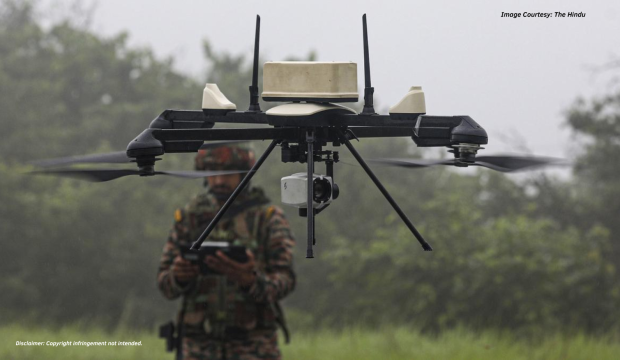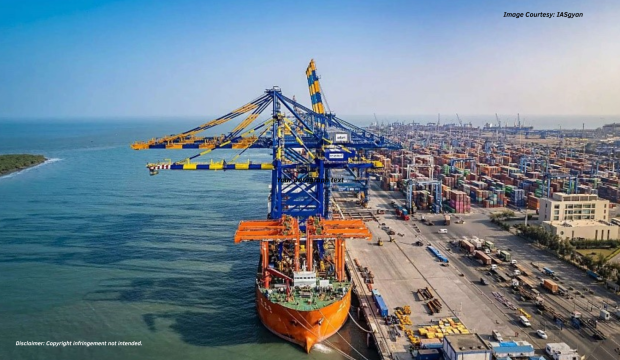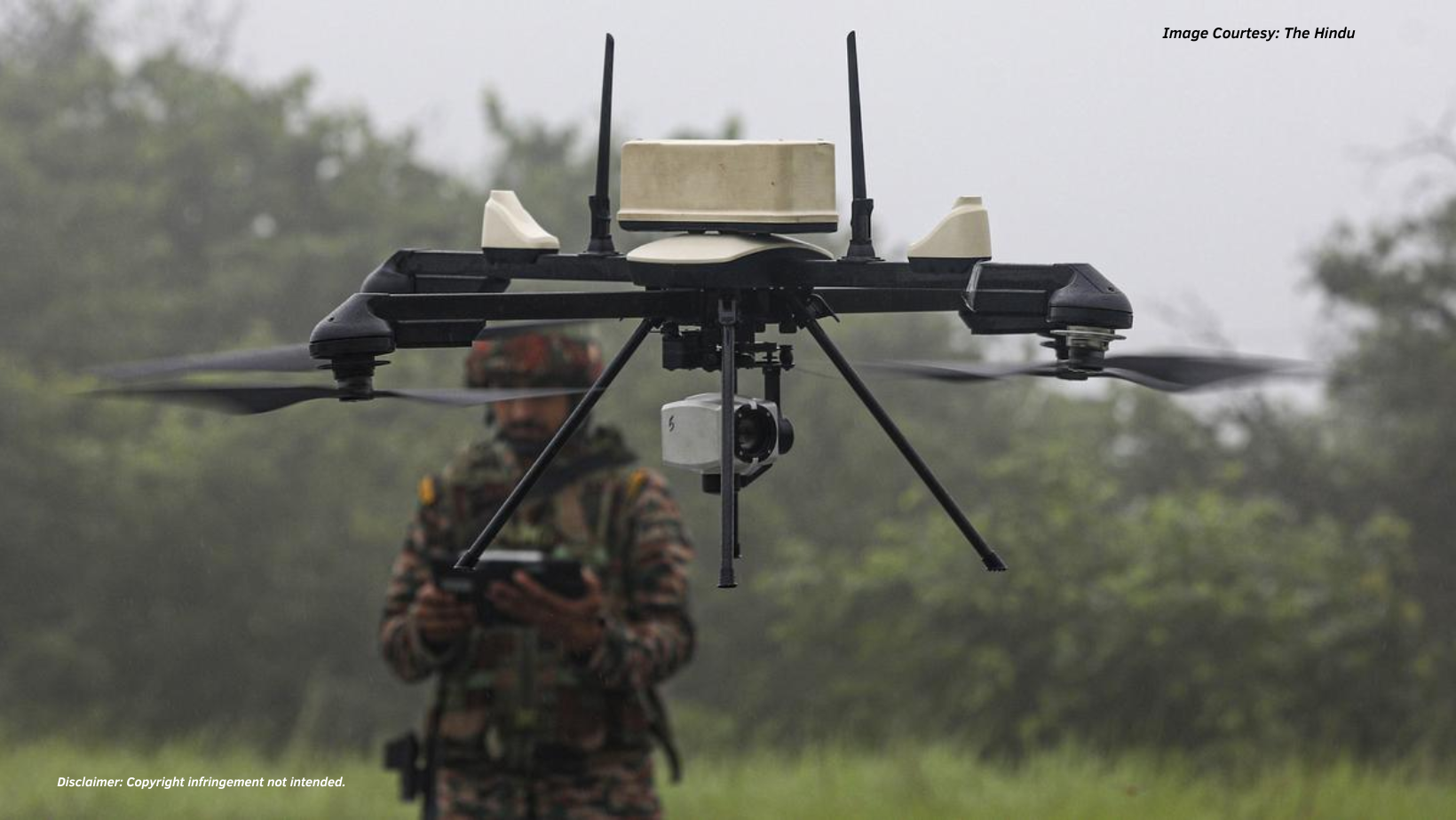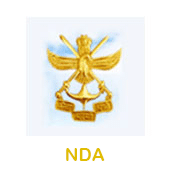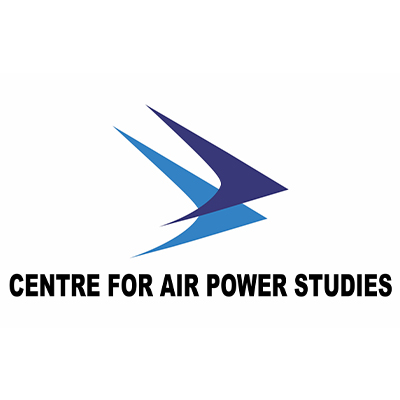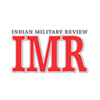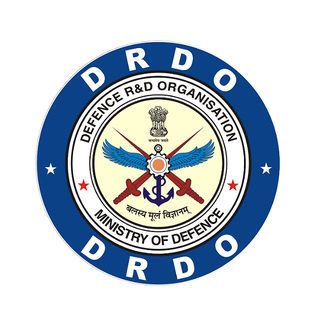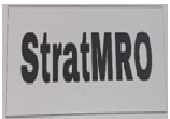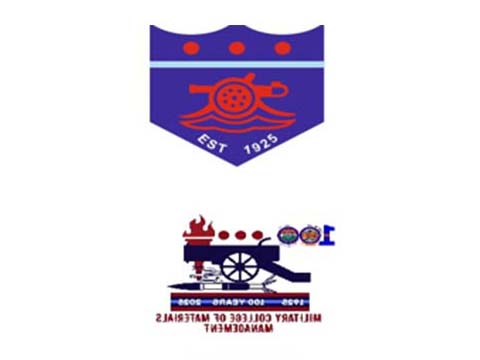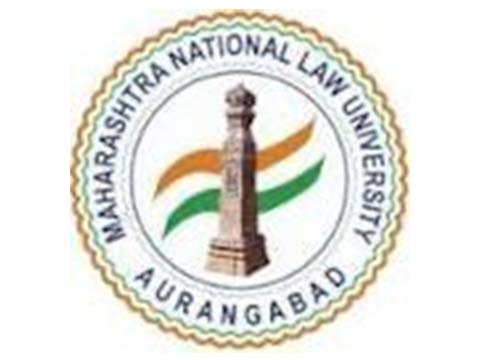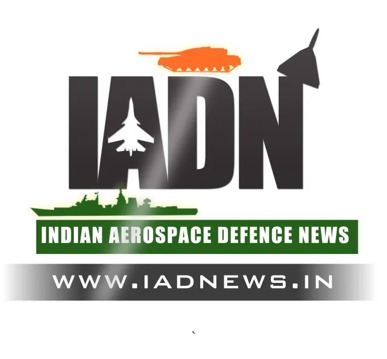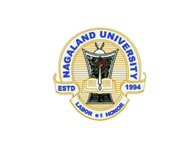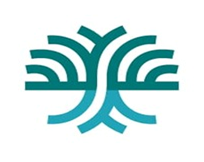Introduction
For generations, the Indian Ocean – Mahasagar, the “great ocean”- has gone beyond being a passage of water between countries; it has served as a common highway of culture, trade, and connectivity. Much earlier than it evolved into a space of geostrategic power rivalry, it was a location where dhows transported not only silk, cotton, and cinnamon, but also philosophical, religious traditions and affinities carried by the waters.1 In India’s civilizational history, which spans thousands of years, the oceanic space was not a boundary to be guarded; it was a network of communities across the borders to be fostered and cherished.2
At present, as geostrategic power competition increases throughout the Indo-Pacific,3 New Delhi’s maritime ambitions aim to revive the sense of inclusivity and tolerance. India’s Prime Minister Narendra Modi’s latest declaration for Vision MAHASAGAR (2025) – “Mutual and Holistic Advancement for Security and Growth Across Regions” for the Global South – represents a crucial phase in repositioning India’s maritime vision in maritime governance.4 Building on the SAGAR doctrine (2015), this recent maritime vision expands New Delhi’s oceanic strategy from the Indian Ocean Region (IOR) to a transregional web of cooperation,AQ2 encompassing the IOR, the Indo-Pacific region, and the broader part of the Global South.5 6
The transition from SAGAR to MAHASAGAR is not just a conceptual one, but it signifies a shift in how New Delhi perceives the Indian Ocean itself. No longer a space of geopolitical tensions, the IOR is being recast as a collective destiny of nations, one where security, growth, and resilience blend. The paper examines how the MAHASAGAR vision repositions New Delhi’s maritime strategy, balancing both regional security with mutual growth and the preservation of civilizational ties.
From SAGAR to MAHASAGAR: India’s Expanding Maritime Horizon
When PM Modi first announced the SAGAR doctrine (2015) in Mauritius, it was a watershed moment in New Delhi’s oceanic vision. SAGAR doctrine positioned the region of IOR at the centre of India’s diplomatic and security policy, promoting collaboration and partnership between the IOR nations.7 Under the framework of SAGAR, New Delhi’s maritime vision is centred on strengthening security and growth in the IOR through maritime security, economic development and a sustainable blue economy.8 where significant objectives encompass five aspects:
“Safety and security of the Indian mainland and island territories and ensuring a safe, secure and stable IOR; deepen economic and security cooperation with friends in the IOR particularly maritime neighbours and island states through capacity building; collective action and cooperation; seek a more integrated and cooperative future towards sustainable development for all; and increased maritime engagement in the IOR as the primary responsibility for the stability and prosperity of IOR lay with those living in the region”.9
Over the years, SAGAR has laid the groundwork for several maritime programs and initiatives, including ‘Swachh Sagar and Surakshit Sagar’, environmental projects that have strengthened New Delhi’s commitment to promoting a sustainable blue economy by undertaking efforts to limit marine pollution and rehabilitate coastal habitats.10 It also emerged as the normative foundation for initiatives like the Information Fusion Centre-Indian Ocean Region (IFC-IOR), established in 2018 in Gurugram, Haryana, India. The centre currently links 76 established linkages in 28 countries and conducts several workshops and training programs for partner nations and officers,11 serving as a “maritime security information sharing hub”.12
The doctrine’s one of the most successful initiatives, has been ‘Mission SAGAR’, encompassing humanitarian and healthcare support to friendly countries, particularly during the COVID-19 pandemic. 13At various stages, the Indian Navy provided food assistance, medical aid, and portable oxygen units to Indian Ocean littoral nations, including the Maldives, Mauritius, and Seychelles. 14 It also strengthened New Delhi’s aid and development engagements with IOR littoral nations by supporting friendly nations, such as the Maldives, Mauritius, and Sri Lanka, in developing coastal radar networks,15 to enhance their maritime domain awareness (MDA) and conduct HADR missions, protecting the coastal communities across the region. However, as New Delhi’s oceanic roles expanded, amid its growing influence in the Indo-Pacific region, which now extends beyond the Indian Ocean into the Pacific Ocean, the Western Indian Ocean, and the East Coast of Africa, a fresh perspective on maritime vision and strategy became significant, that went beyond immediate geography.
Ten years later, PM Modi announced the MAHASAGAR Vision at the National Day of Mauritius on March 12, 2025, Port Louis. 16This declaration indicated not a new concept, but rather a repositioning of New Delhi’s maritime-oriented vision. He stated,
“Our vision for the Global South will be – going beyond SAGAR – it will be MAHASAGAR … It shall encompass the ideas of trade for development, capacity building for sustainable growth, and mutual security for a shared future … we will extend cooperation through technology sharing, concessional loans and grants”. 17
It signalled the transition of the previous SAGAR initiative into a wider architecture of cross-regional cooperation. The shift from “region” to “across regions” highlighted New Delhi’s increasing awareness that its stability and development are interlinked not just with its surrounding countries but also with the broader Global South. In recent event of Maritime Week 2025, Home Minister Amit Shah, mentioned,
“India’s maritime history spans nearly 5,000 years…. India is playing the role of a bridge between the Indo-Pacific and the Global South, fostering development, security, and environmental progress”18, which positions India’s maritime vision towards a point of convergence for global cooperation and regional equilibrium.
Thus, MAHASAGAR vision became crucial and was adopted to enhance SAGAR’s spirit of cooperation across regional boundaries, aligning with New Delhi’s Indo-Pacific Oceans Initiative (IPOI) (2019) and its vision for the Global South.19 This new maritime outlook incorporates maritime security with joint development efforts on “trade for development, capacity building for sustainable growth, and mutual security for a shared future”, 20highlighting measures in domains of blue economy, digital public infrastructure and technology sharing.
MAHASAGAR also reflects India’s growing presence and confidence in major multilateral maritime groupings such as BIMSTEC and the Indian Ocean Rim Association (IORA). These platforms have become increasingly important in recent years, giving New Delhi the space to explain its broader maritime vision and to build long-term partnerships across the region.
What is particularly notable in the recent MAHASAGAR dialogues is how India has begun to present itself, not just as a responsible neighbour, but as a “preferred security partner” and a “net security provider” for many countries across the Global South. Through these regional conversations, India is slowly reshaping the narrative: moving from the role of a traditional regional stabiliser to that of a cross-regional maritime leader. This leadership is grounded in ideas of accessibility, shared prosperity, and collective security, an approach that aims to bring together diverse ocean-linked communities under a common vision.
The Indian Ocean as a Community: A Civilizational Reimagining
For thousands of years, the Indian Ocean has been much more than a body of water—it has been a living, breathing corridor of trade, culture, and human connection. It linked the Indian subcontinent with distant shores in Southeast Asia, East Africa, and the Middle East, shaping a shared civilizational space long before the modern concept of nation-states emerged.
Archaeological discoveries at Lothal in Gujarat, Harappan seals found in foreign lands, and artefacts unearthed along the Malabar Coast all remind us that ancient India was deeply engaged with far-off civilisations such as Egypt, the Roman Empire, and Southeast Asia. These exchanges were not only commercial but also cultural, creating a rich maritime heritage that continues to define India’s place in the Indian Ocean today.
The Indian Ocean as a Community: A Civilizational Reimagining
For centuries, the Indian Ocean has been far more than a stretch of water, it has been a living highway of trade, ideas, and cultural exchange. It connected the Indian subcontinent with Southeast Asia, East Africa, and the Middle East, allowing people, goods, and traditions to travel freely across continents long before modern shipping routes existed.
Archaeological evidence reinforces this deep historical connection. Excavations at Lothal in Gujarat, one of the world’s earliest known port cities, along with Harappan seals found in foreign lands and artefacts uncovered along the Malabar Coast, show how actively ancient India traded with distant civilisations such as Egypt, the Roman Empire, and early Southeast Asian kingdoms. These were not isolated exchanges but part of a vibrant maritime world where Indian merchants, craftsmen, and ideas travelled widely.
This influence became even more pronounced during the Chola period, especially around 1025 CE. The Cholas expanded India’s maritime footprint across Sri Lanka, the Maldives, and deep into Southeast Asia. Importantly, this expansion was not driven only by military campaigns, it was equally shaped by thriving commerce and a strong civilizational pull. Indian cultural ideas, Sanskrit traditions, Hindu-Buddhist philosophies, and even South Indian temple architecture travelled across the seas, influencing powerful kingdoms like Angkor and Srivijaya. These interactions helped shape a shared transoceanic heritage that still echoes across the Indian Ocean region.
Over time, diverse communities, including Armenian merchants, Gujarati traders, and Jewish diasporas, built lasting trading networks along these shores. Their movements created a common linguistic and cultural environment, turning the Indian Ocean into a space marked by cooperation, coexistence, and shared prosperity.21
This cultural presence in the IOR establishes its philosophical basis in the ancient Indian concept of ‘Vasudhaiva Kutumbakam’, which translates to ‘the world is one family’. 22In New Delhi’s maritime vision, security and development cannot be achieved in a vacuum; they are fostered through mutual tolerance, cooperation, and an inclusive approach. @# The MAHASAGAR vision draws deeply from this rich civilizational history, recognising that the prosperity of the Indian Ocean is inseparable from the well-being of the people who live around it. By reviving this age-old philosophy, New Delhi is shaping an indigenous way of thinking about the seas, one where the ocean is treated as a shared space and a shared responsibility, rather than something to be dominated or controlled.
This approach also fits naturally with India’s broader conversations on the Global South. It positions New Delhi as a bridge, connecting ancient maritime cultures with emerging ocean economies, and linking historical experience with modern aspirations.
Strategically, this vision complements India’s larger goal of contributing to a multipolar, fair, and inclusive world order. Unlike systems based on coercion or dominance, India’s idea of maritime governance rests on cooperation, equality, and mutual respect, values that resonate strongly across the Indian Ocean community.
This perspective rests in opposition to Western constructs of maritime strategy, which traditionally presented oceans as areas of dominance, control, and competition.24 The documents of Alfred Mahan, including the 19th-century concept of “command of the sea,” are linked to modern US freedom of navigation operations and colonial maritime ideologies that viewed maritime power as a source of influence, calculating its effects based on the total quantity of naval bases and warships. 25Therefore, by incorporating civilizational philosophy into its geostrategic vision, MAHASAGAR shifts New Delhi’s ethical legacy into oceanic diplomacy, a gentle yet significant approach that promotes the nation’s legitimacy as both a ‘preferred security partner’ and an architect of cooperation across the IOR and beyond.
Operationalising MAHASAGAR: From Vision to Action
The MAHASAGAR vision is being made possible through an amalgamation of strategic efforts, including capacity-building initiatives, economic cooperation, and interregional collaborations, which represent New Delhi’s evolving maritime diplomacy. After one month of its announcement, India has taken the initiative in partnership with the littoral nations of the Western Indian Ocean Region, conducting the “AIKEYME” (Africa-India Key Maritime Engagement) exercise between the Indian Navy and ten African countries, prioritising capacity-building measures.26 Such as “piracy and information sharing, training in seamanship and Visit, Board, Search, and Seizure (VBSS) operations” 27along with this initiative, New Delhi deployed INS Sunayna to the southwest Indian Ocean (April 2025), which is a component of the Indian Navy’s Indian Ocean Ship (IOS) Sagar initiative manned by a joint team of Indian and nine other countries, such as Madagascar, Mozambique, South Africa and Comoros.28 This deployment marked the inauguration of AIKEYME, which aimed to enhance maritime partnerships and address emerging non-traditional challenges. These newly taken initiatives, especially with African littoral states, highlight New Delhi’s shift from a regional maritime actor to a leader of the Global South, supporting the developing nations with the vision of becoming a global leader, aligning with the Maritime Amrit Kaal Vision 2047. To fulfil this vision, “the Modi government has increased the budget sixfold, raising it from 40 million dollars to 230 million dollars”,29 working towards to create a prosperous and shared ocean.
Also, the blue economy component of MAHASAGAR demonstrates New Delhi’s aspiration to integrate sustainability with inclusive economic development.30 It focuses on concerns such as marine ecology, resource management, and disaster risk reduction, which also constitute components of IPOI. 31Through the Maritime Safety and Security Working Group (IORA), where India co-leads with Australia, New Delhi is promoting and reconceptualizing maritime security as a mutual responsibility, collaborating and supporting the IOR region countries to enhance safety and security in the region.32 For example, New Delhi’s collaboration with countries like Kenya on initiatives such as extracting ocean-based resources, incorporating agro-ecological practices into the blue economy, and promoting energy security highlights transregional cooperation.33 To substantiate this point, India acknowledges that for Small Island States and broader Global South countries, the ocean is not just merely a resource but a lifeline at risk by climate change. 34 MAHASAGAR reflects New Delhi’s ideals of a “moving forward with a vision to create a green, prosperous, and shared ocean” 35to support the nations in limiting climate challenges. The objective is to promote shared prosperity while combating coastal pollution, acidification and overfishing, concerns that unfairly impact the countries across the region.
Additionally, Humanitarian Assistance and Disaster Relief (HADR) missions signify a holistic core component of New Delhi’s lead operational role under MAHASAGAR. Recently, New Delhi deployed INS Sharda at Maafilaafushi Atoll, during HADR exercise with the Maldives (May 4 to May 10, 2025), which follows MAHASAGAR’s vision, 36highlighting collective engagement to ensure “peace, stability, and prosperity in the Indian Ocean Region”. 37New Delhi’s immediate assistance during the Operation Sadbhav (2024) 38and Operation Samudra Maitri (2018) 39 in Vietnam and Indonesia respectively, highlighted its capability to display preparedness and mutual support beyond South Asia. Also, New Delhi has regulated its HADR maritime engagement through platforms such as the Quad Partnership on Humanitarian Assistance and Disaster Relief in the Indo-Pacific, the ASEAN Regional Forum (as a dialogue partner), the BIMSTEC Disaster Management Framework, and the IORA, thereby enhancing its multilateral response capability.
Significantly, from these engagements, it can be seen that MAHASAGAR’s doctrinal approach combines climate adaptability and ecological security, synchronising maritime initiatives with the Paris Agreement and the SDG-14 agenda (“Life Below Water”).
Redefining Maritime Security for the Global South
MAHASAGAR visions defines India’s strategic and normative approach to redefine maritime security from the standpoint of the Global South. The vision aligns with the idea that maritime governance ought to avoid any maritime competition or adversarial conflicts in maritime space, but instead be anchored in mutual cooperation; 40 inclusive access to resource allocation, technology transfer, and fair-opportunity for capacity-building programs. Through this vision, New Delhi advocates for a just maritime order in which Global South countries have both a representation and participation in developing sustainable economic growth and protecting their maritime frontiers.
From a rational approach, India has broadened its position as a cooperative security partner in expanding technology cooperation, maritime capacity-building, and environmental resilience, particularly with Southeast Asian countries, Pacific Island states, and African nations. India’s collaboration with multilateral and research institutions like IFC-IOR, 41University of the Arctic,42 and The India-Africa Forum Summit have enhanced and broadened this supportive stance, expanding to marine research, promoting sustainable fishing practices, and facilitating the development of low-carbon ports. 43Bilaterally, recently, under the MAHASAGAR vision, INS Sandhayak, the nation’s first indigenously developed and manufactured hydrographic survey ship, has visited Port Klang in Malaysia to promote global solidarity and encourage greater understanding of the vision to the world. 44The ship has full potential of “full scale coastal and deep-water surveying capacity, oceanographic data collection and is capable of search and rescue (SAR) and humanitarian operations with onboard helicopter and hospital functions”,45 highlighting New Delhi’s broadening role as a guarantor of shared maritime benefits.
Presently, what we observe beneath the MAHASAGAR vision is a clear focus on technological developments as a crucial component of New Delhi’s maritime cooperation. The vision holds that 21st-century maritime governance relies as much on information, data, and technological practices as it does on foreign policy and security affairs. New Delhi is expanding and developing its indigenously designed innovations under the ‘Atmanirbhar Bharat’ (self-reliant India) program to boost its naval, coastal, and marine research capacity.46 From Aircraft Carrier (INS Vikrant) 47and Autonomous Underwater Vehicle (AUV) 48to Underwater Remotely Operated Vehicle (ROV), 49and Air Cushion Vehicles (Hovercraft), 50there are significant examples from India that demonstrate how indigenously designed technologies can lay the groundwork to showcase countries from the Global South as competent in developing their own maritime approaches, grounded in domestic capability and can also additionally support South-South partners (South-South Cooperation) in promoting MDA, marine resource governance and crisis management. For instance, Myanmar has gained from India’s Hull-Mounted Sonars, developed by DRDO, which enhance underwater surveillance and threat detection. 51While jointly developed (India-Russia) BrahMos supersonic cruise missile has been exported to the Philippines, and nations like Indonesia and Vietnam have shown interest in purchasing the missile and 52 recently, the Defence Minister of India has announced two more export orders worth ($450 million). 53 In the African context, India gifted two water-jet propelled Fast Interceptor Craft (FICs) to Mozambique in 2024, additionally, in 2019, India also gifted two large Interceptor vessels to the nation,54 which will support Mozambique, “to combat maritime terrorism and ongoing insurgency in the Cabo Delgado province” 55 and assist in enhancing maritime security in the region. These collaborations demonstrate how New Delhi’s technology-driven outreach supports developing nations in the IOR and across the region, enabling them to build their maritime infrastructure and providing capacity-building support, all while respecting their sovereignty and autonomy.
Conclusion
The MAHASAGAR vision marks a turning point in India’s maritime future, shifting from a regional responsibility to interregional collaboration. It combines India’s civilizational concept of Vasudhaiva Kutumbakam with an arrangement of connectivity, innovation and resilient growth. By increasing collaboration, transcending the region of South Asia to the broader Indo-Pacific and island nations, New Delhi prioritises equality over hierarchy through dialogue, ensuring fair representation and inclusion, rather than exclusion. This vision reconsiders maritime security as a mutual duty based on credibility, adaptability and technological development. As India moves toward Viksit Bharat 2047, the MAHASAGAR vision embodies not just a maritime policy but also an ethical and strategic orientation, positioning New Delhi’s regional stewardship in the conviction that the growth of the ocean must promote the collective resilience of all.
DISCLAIMER
The paper is author’s individual scholastic articulation and does not necessarily reflect the views of CENJOWS. The author certifies that the article is original in content, unpublished and it has not been submitted for publication/ web upload elsewhere and that the facts and figures quoted are duly referenced, as needed and are believed to be correct.
References
Rai, Adwita. “SILK, COTTON AND CINNAMON: MARITIME RENAISSANCE OF THE INDIAN OCEAN.” National Maritime Foundation, January 21, 2016.
Prange, Sebastian R. “Scholars and the Sea: A Historiography of the Indian Ocean.” History Compass 6, no. 5 (September 1, 2008): 1382–93.
Admin. “Complexities & Untapped Potential of Indo-Pacific Region Demand Concerted Efforts for a Prosperous, Secure & Inclusive Future – Indian Defence Minister.” Defence Street, September 26, 2023.
Durai, Suchitra. “India’s Maritime Vision Encompasses SAGAR, Indo-Pacific and MAHASAGAR.” Arab News, August 14, 2025.
Ibid
Sinha, Rahul. “From SAGAR to MAHASAGAR: India Expands Its Maritime Vision for Connected Indo-Pacific.” Zee News, October 28, 2025.
Padmaja, G. “REVISITNG ‘SAGAR’ – INDIA’S TEMPLATE FOR COOPERATION IN THE INDIAN OCEAN REGION.” National Maritime Foundation, April 25, 2018.
Ibid
Suchitra Durai, “India’s Maritime Vision: From SAGAR to Indo-Pacific to MAHASAGAR by Amb Suchitra Durai, Embassy of India, Dili, Timor Leste, August 13, 2025.
Ministry of Earth Sciences. “Ministry of Earth Sciences Successfully Concludes the Swachh Sagar, Surakshit Sagar 3.0.” Press release, August 13, 2025.
Information Fusion Centre – Indian Ocean Region. “INFORMATION FUSION CENTRE – INDIAN OCEAN REGION-Collaboration for Safety and Security,” n.d.
Ibid
Ministry of Defence. “MISSION SAGAR.” Press release, February 7, 2022.
Ibid
Peri, Dinakar. “India Looks at Integrating More Countries into Coastal Radar Network.” The Hindu, December 20, 2020.
Ministry of External Affairs, Government of India. “English Translation of Press Statement by Prime Minister during the India – Mauritius Joint Press Statement (March 12, 2025).” Press release, March 12, 2025.
Ibid
Ministry of Home Affairs, “Union Home Minister and Minister of Cooperation Shri Amit Shah Inaugurates the ‘India Maritime Week – 2025’ in Mumbai,” Press release, October 27, 2025
Pratap, Rishabh Madhavendra. “India’s Maritime Diplomacy Matures: A Decade from SAGAR to MAHASAGAR.” Times Now, October 27, 2025.
Kumar, Vivek. “PM Announces Mahasagar Vision with Mauritius for Maritime Security, Trade.” India Today, March 13, 2025.
Sherry, Bennett. “Indian Ocean Trade Routes.” OER Project, n.d.
Suchitra Durai, “India’s Maritime Vision: From SAGAR to Indo-Pacific to MAHASAGAR by Amb Suchitra Durai, Embassy of India, Dili, Timor Leste, August 13, 2025,
Ibid
Geostrata, The. “Alfred Thayer Mahan and the Supremacy of Naval Power.” THE GEOSTRATA, August 27, 2024.
Ibid
Ministry of Defence. “INDIAN NAVY’s MAIDEN INITIATIVES OF INDIAN OCEAN SHIP SAGAR (IOS SAGAR) AND AFRICA INDIA KEY MARITIME ENGAGEMENT (AIKEYME).” Press release, March 24, 2025.
Ibid
ibid
Ministry of Home Affairs, “Union Home Minister and Minister of Cooperation Shri Amit Shah Inaugurates the ‘India Maritime Week – 2025’ in Mumbai,” Press release, October 27, 2025
The Indo-Pacific Studies Centre. “From SAGAR to MAHASAGAR: India’s Strategic Evolution in the Indian Ocean Region,” n.d.
National Maritime Foundation. “INDO-PACIFIC REGIONAL DIALOGUE 2025: PROMOTING HOLISTIC MARITIME SECURITY AND GROWTH: REGIONAL CAPACITY-BUILDING AND CAPABILITY-ENHANCEMENT,” 2025.
The Department of Foreign Affairs and Trade, Australian Government. “IORA Priorities,” n.d.
Ministry of External Affairs, Government of India. “India- Kenya Joint Vision Statement on Maritime Cooperation in the Indian Ocean Region – BAHARI.” Press release, December 5, 2023.
Ministry of Home Affairs, “Union Home Minister and Minister of Cooperation Shri Amit Shah Inaugurates the ‘India Maritime Week – 2025’ in Mumbai,” Press release, (October 27, 2025).
Ibid
Ministry of Defence, “INS SHARDA ARRIVES MAAFILAAFUSHI, MALDIVES FOR HADR EXERCISE,” Press release, May 5, 2025.
Ibid
Ministry of External Affairs, Government of India, “Operation Sadbhav: India Sends 53 Tonnes of Emergency Flood Relief Assistance Worth US$1 Million to the Union of the Republic of Myanmar,” Press release, September 17, 2024.
Ministry of External Affairs, Government of India, “Operation Samudra Maitri: India’s Assistance to Earthquake and Tsunami Affected Areas in Indonesia,” Press release, October 17, 2018.
Ministry of Home Affairs, “Union Home Minister and Minister of Cooperation Shri Amit Shah Inaugurates the ‘India Maritime Week – 2025’ in Mumbai,” Press release, October 27, 2025
Information Fusion Centre – Indian Ocean Region. “INFORMATION FUSION CENTRE – INDIAN OCEAN REGION-Collaboration for Safety and Security,” n.d.
Ministry of Education. “International Workshop on ‘India’s Polar Region Policy Towards Building Partnership with Sustainable Approach’ (March 12 2024).” Press release, March 13, 2024.
Singh, Arushi. “India–Africa Maritime Security and Strategic Cooperation in the Twenty-First Century.” IDSA, n.d.
Pti, “INS Sandhayak Visits Malaysian Port to Boost Maritime, Hydrographic Cooperation,” The Times of India, July 19, 2025
Pti, “INS Sandhayak Visits Malaysian Port to Boost Maritime, Hydrographic Cooperation,” The Times of India, July 19, 2025,
Ministry of Defence, “Operation Sindoor Sent a Global Message That India Is Ever Ready to Respond to Every Challenge: Raksha Mantri at Naval Commanders’ Conference,” Press release, October 23, 2025
PIB Headquarters. “INS Vikrant: India’s First Indigenous Aircraft Carrier and a Landmark in Naval Capability.” Press release, October 24, 2025.
Joshi, Shilpa Inamdar. “Matsya–The Indigenous Autonomous Underwater Vehicle.” Research Matters, March 3, 2022
Department of Science and Technology (DST), Govt of India. “Design and Development of Underwater Remotely Operated Vehicle (ROV) for Inspection and Surveillance,” n.d
Ministry of Defence, “Indigenous Hovercraft Construction for ICG Begins at Chowgule Shipyard,” Press release, (July 30, 2025).
Ministry of Defence. “Export of Sonar by DRDO.” Press release, April 28, 2015.
Bisht, Inder Singh. “India Bags $450 Million in BrahMos Missile Export Deals.” DefensePost, October 23, 2025.
Ibid
ANI News. “India Gifts 2 More Interceptor Boats to Mozambique,” November 9, 2024
Ibid

Bidisha Deka
is a Research Intern at CENJOWS



